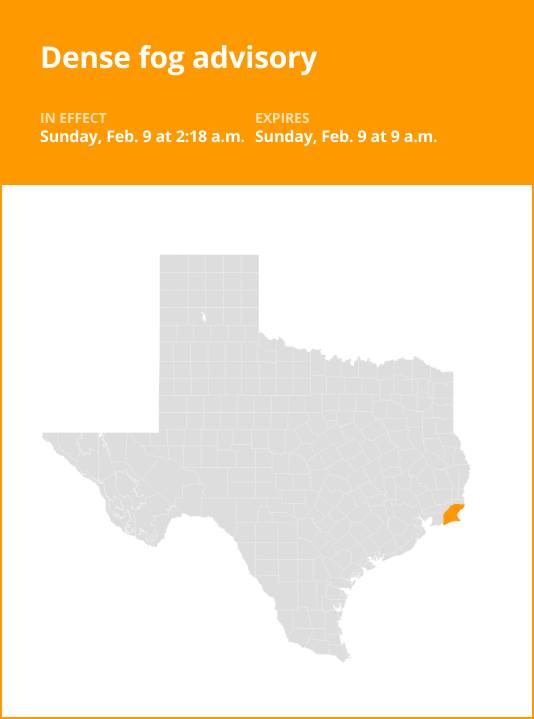Southeast Texas under a dense fog advisory until Sunday morning
Published 2:22 am Sunday, February 9, 2025
The National Weather Service issued a dense fog advisory at 2:18 a.m. on Sunday in effect until 9 a.m. The advisory is for Upper St. Martin, Lower St. Martin, West Cameron, East Cameron, Upper Vermilion, Upper Iberia, Upper St. Mary, Southern Calcasieu, Southern Jefferson Davis, Southern Acadia, Lower Vermilion, Lower Iberia and Lower St. Mary as well as Lafayette, Jefferson and Orange counties.
The NWS states, “Visibility one quarter mile or less in dense fog.”
“Low visibility could make driving conditions hazardous,” explains the NWS. “If driving, slow down, use your headlights, and leave plenty of distance ahead of you.”

Fog safety: Tips from the NWS for safe travels
Trending
If a dense fog advisory is issued for your area, it means that widespread dense fog has developed and visibility often drops to just a quarter-mile or less. These conditions can make driving challenging, so exercise extreme caution on the road, and if possible, consider delaying your trip.
If driving in fog becomes unavoidable, remember these safety tips:
Moderate your speed:
Slow down and allocate extra travel time to reach your destination safely.
Visibility priority:
Ensure your vehicle is visible to others by using low-beam headlights, which automatically activate your taillights. Utilize fog lights if your vehicle is equipped with them.
Trending
Avoid high-beams:
Refrain from using high-beam headlights, as they create glare that impairs your visibility on the road.
Keep a safe distance:
Maintain a generous following distance to account for abrupt stops or shifting traffic patterns.
Stay in your lane:
Use the road’s lane markings as a guide to remaining in the correct lane.
Zero visibility strategy:
In situations of near-zero visibility due to dense fog, activate your hazard lights and seek a secure location, such as a nearby business’s parking lot, to pull over and come to a stop.
Limited parking options:
If no parking area is available, pull your vehicle as far to the roadside as possible. Once stationary, turn off all lights except the hazard flashers, engage the emergency brake, and release the brake pedal to ensure your tail lights are not illuminated, reducing the risk of other drivers colliding with your stationary vehicle.
By adhering to these recommendations from the NWS, you can navigate foggy conditions with greater safety, mitigating the risk of accidents and prioritizing your well-being.
Source: The National Weather Service






